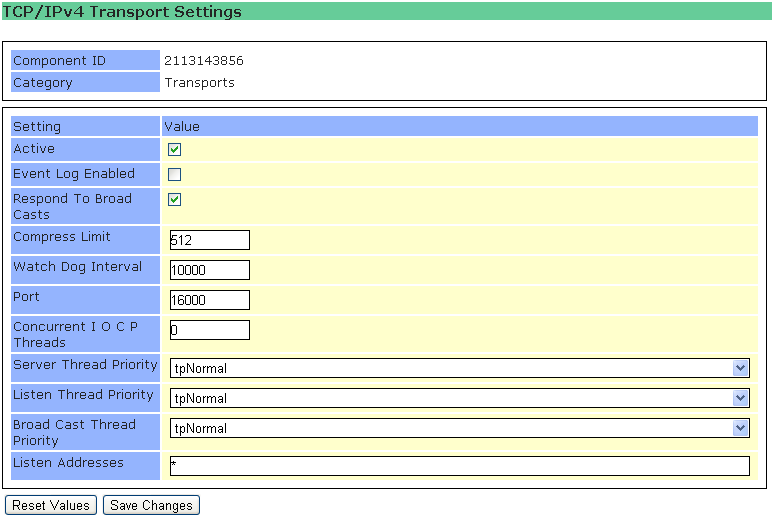
Respond to Broadcast
When this option is active, it instructs the server to send back its identification and version number on broadcast requests received via the regular transport being used.
Compress Limit
Compress Limit sets the minimum number of bytes at which the server initiates data compression for sent messages. If a message size is below that value compression is ignored.
Port
Port for TCP/IPv4 is the TCP port used for communication. Please note that this has to match with the client side for successful communication.
Adresses
Use the Addresses field to set the IP addresses the transport will be bound to as a comma delimited list. You can use the asterisk (*) to bind the transport to all available addresses, which is also the the default.
Server Thread Priority
The Server Thread Priority sets the priority of the server thread. The server thread of a transport is the one that actually does the work for each request. Be careful with changing thread priorities as there is a fine balance between the different threads of the server needed to achieve optimal performance. For normal processing mode you should generally leave the priorities at their default settings. Valid settings are tpIdle, tpLowest, tpLower, tpNormal, tpHigher, tpHighest and tpTimeCritical.
Concurrent IOCP Threads
Concurrent IOCP Threads is the number of threads processing IOCP (I/O Completion Port) signals. If this number is 0, it means that there is one thread initialised for each processor in the server machine. For general use, this is the optimal setting. For special purposes, it might be useful to change these settings.
Broadcast Thread Priority
Broadcast Thread Priority sets the priority for the thread that is responsible for receiving and answering server broadcasts.
Listen Thread Priority
Listen Thread Priority is the priority for the thread that is responsible for receiving requests and putting it into the Server Thread Queue.
Server Addresses
In the Server Addresses field you see the valid addresses of the server for this transport, which you have to use in the form ServerName@Address for connecting to this server.